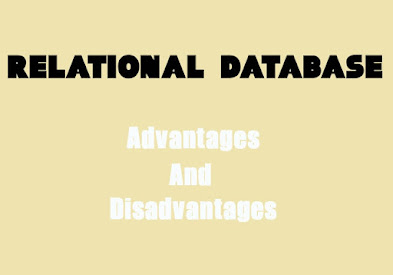What is Relational Database ?
A Relational database is a kind of management system in which tables are used to store data. It is the most preferred way for software developers to store complex data. Once the data is stored inside the table, it can be retrieved anytime.
What are examples for Relational Database ?
These tables uses primary keys and foreign keys to make them interrelated to each other. Thus, it saves time to a greater extent.
Some of the examples for relational database are Oracle, SQL server, DB2 and Access.
Although a relational database offers many benefits compared to other types of databases, it aren't flawless. Similar to other tools, it is with weaknesses. By comparing the advantages and disadvantages, you will be able to know whether relational database will be the right choice for your project.
In this article, I will be exploring about 6 Advantages and Disadvantages of Relational Database | Limitations & Benefits of Relational Database. Through this post, you will know the pros and cons of using relational database.
Let's get started,
Advantages of Relational Database
1. Speed
Even though a relational database is poor in terms of performance, still its speed is considerably higher because of its ease and simplicity. And also various optimizations that is included in a relational database further increases its speed. So all the applications will run with appropriate speed when used in a relational database.
2. Security
Since there are several tables in a relational database, certain tables can be made to be confidential. These tables are protected with username and password such that only authorized users will be able to access them. The users are only allowed to work on that specific table.
3. Simplicity
Compared to other types of network models, a relational database model is much simpler. It is free from query processing and complex structuring. As a result, it does not require any complex queries. A simple SQL query is sufficient enough for handling.
4. Accessibility
Unlike other types of databases, a relational database does not require any specific path for accessing the data. Even modifying data in the relevant column is made easy. So whatever the outcome shown is appropriate to the user.
5. Accuracy
As mentioned earlier, relational database uses primary keys and foreign keys to make the tables interrelated to each other. Thus, all the data which is stored is non-repetitive. Which means that the data does not duplicate. Therefore, the data stored can be guaranteed to be accurate.
6. Multi User
Multiple users will be able to access a relational database at the same time. Even if the data is updated, the users can access them conveniently. Hence, the crashes happening from multi access is possibly prevented.
Disadvantages of Relational Database
1. Cost
The underlaying cost involved in a relational database is quite expensive. For setting up a relational database, there must be separate software which needs to be purchased. And a professional technician should be hired to maintain the system. All these can be costly, especially for businesses with small budget.
2. Performance
Always the performance of the relational database depends on the number of tables. If there are more number of tables, the response given to the queries will be slower. Additionally, more data presence not only slows down the machine, it eventually makes it complex to find information. Thus, a relational database is known to be a slower database.
3. Physical Storage
A relational database also requires tremendous amount of physical memory since it is with rows and columns. Each of the operations depend on separate physical storage. Only through proper optimization, the targeted applications can be made to have maximum physical memory.
4. Complexity
Although a relational database is free from complex structuring, occasionally it may become complex too. When the amount of data in a relational database increases, it eventually makes the system more complicated. Each and every data is been complex since the data is arranged using common characteristics.
5. Information Loss
Large organizations tends to use more number of number of database systems with more tables. These information can be used to be transferred from one system to another. This could pose a risk of data loss.
6. Structure Limitations
The fields that is present on a relational database is with limitations. Limitations in essence means that it cannot accommodate more information. Despite if more information are provided, it may lead to data loss. Therefore, it is necessary to describe the exact amount of data volume which the field will be given.










No comments:
Post a Comment